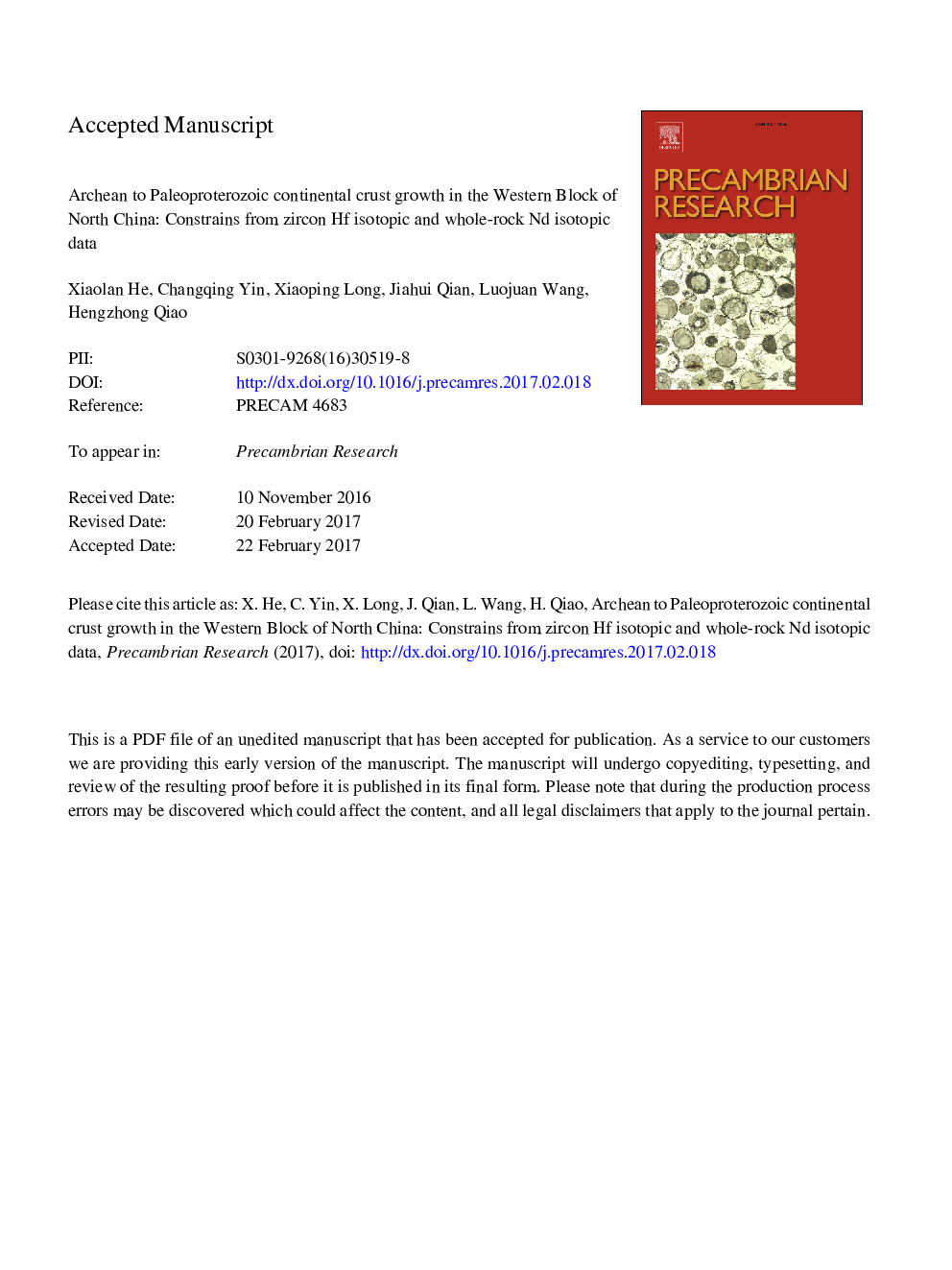| Article ID | Journal | Published Year | Pages | File Type |
|---|---|---|---|---|
| 8912718 | Precambrian Research | 2017 | 32 Pages |
Abstract
This study presents new zircon Hf isotopic data, which, combined with previous zircon U-Pb geochronological, in-situ Hf and whole-rock Nd isotopic data from the Western Block of the North China Craton (NCC), provide a new insight into global-scale continental crustal growth and evolution of early Earth. In particular, igneous zircons and detrital zircons from the Yinshan Block yield 207Pb/206Pb ages of 2446-2733 Ma, with an age peak at 2524 Ma. Of those, 86% have positive εHf(t) values and Archean Hf model ages (TDMC) (2.6-2.9 Ga) peaking at 2840 Ma. This indicates that those basement rocks of the Western Block are most likely derived from a depleted mantle source, implying a crust-mantle differentiation event at 2.8-2.7 Ga followed by extensive reworking at â¼2.5 Ga. More than 95% detrital zircons from the Khondalite Belt have ages converging on 2.2-2.0 Ga and their εHf(t) values vary from â5.43 to +9.54, of which 80% are positive and yield Hf model ages (TDMC) peaking at 2250 Ma. These characteristics of εHf(t) values in the Khondalite Belt are also documented in the basement rocks of the Ordos Block under same age frame of 2.2-2.0 Ga. This suggests that the Ordos Block may be a juvenile crust with addition of older materials. The initiation of subduction under the southern margin of the Ordos Block leads to the formation of a 2.2-2.0 Ga magmatic arc, which is likely related to the assembly of the supercontinent Columbia.
Related Topics
Physical Sciences and Engineering
Earth and Planetary Sciences
Geochemistry and Petrology
Authors
Xiaolan He, Changqing Yin, Xiaoping Long, Jiahui Qian, Luojuan Wang, Hengzhong Qiao,
